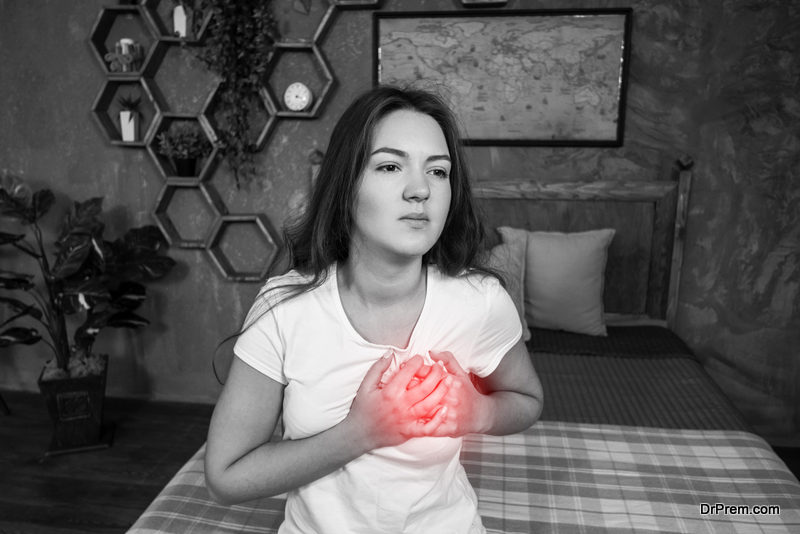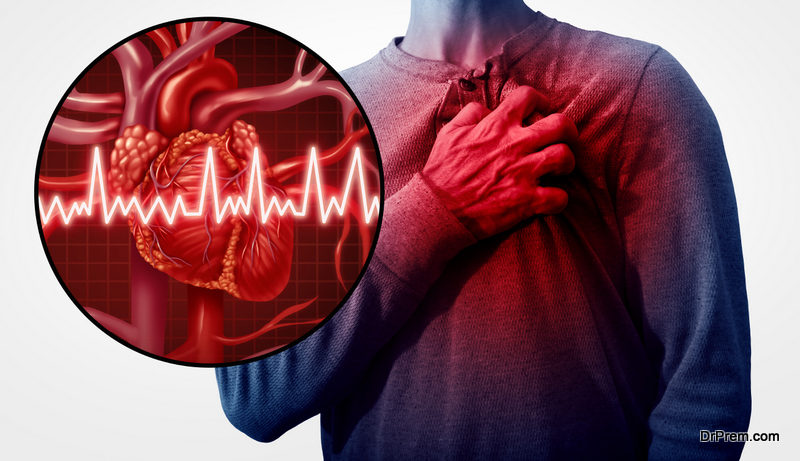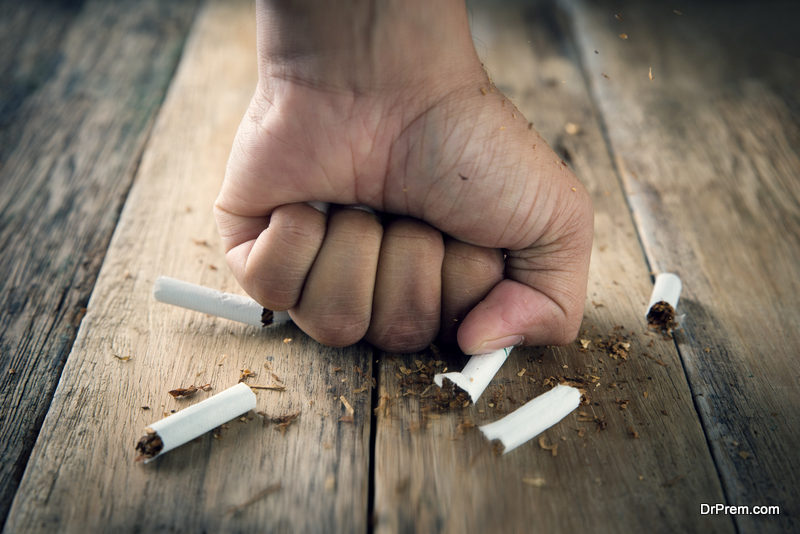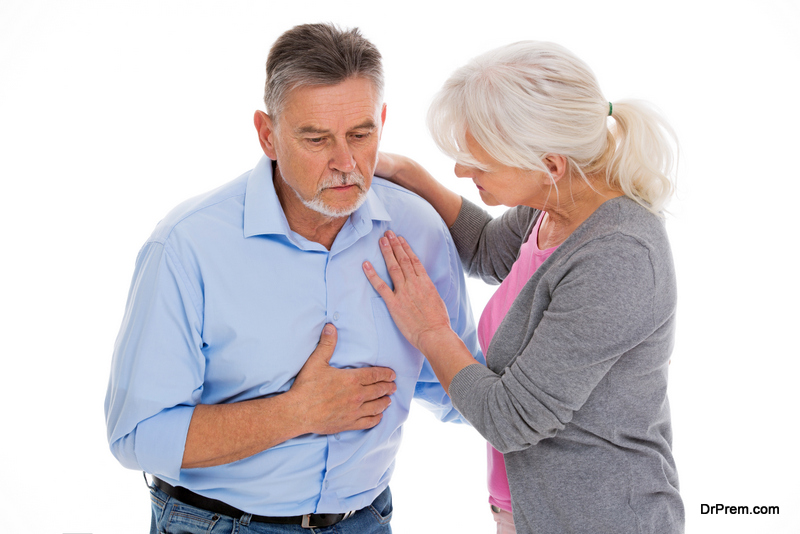Heart attacks are silent killers. But it can show symptoms well ahead – say a week – before it actually strikes. Uncontrollable pressure or tightness of jaw and shoulders, pain around the chest spreading outwards are indications. Sometimes shortness of breath, nausea, cold sweat and dizziness could also precede a cardiac arrest.
Time is of the essence for diagnosis and treatment. If you can deliver heart attack emergency treatment at home with first aid tablets, the patient can be saved. Later he/she may be moved to a health care unit. Heart attacks can be caused by the formation of plaques in the artery that again is caused by faulty lifestyle.
Consumption of too much animal fat, trans-fat, smoking and cutting out fruits and high fiber vegetables may be a valid reason. Sedentary lifestyle adds to the already damage done and your bad cholesterol levels shoot. Heart attacks claim a substantial count of global deaths. It strikes real fast. But, there is a chance of survival of the patient if the diagnosis is quick and administration of heart medications are fast enough.
Steps to be taken at home as an emergency measure:
 Heart attack emergency treatment at home could spell a difference between life and death. Here are some life-saving tips:
Heart attack emergency treatment at home could spell a difference between life and death. Here are some life-saving tips:
- Call your local medical emergency number. If the phone doesn’t answer, take help of neighbors and rush patient to hospital located nearest.
- If not allergic to aspirin, ask the patient to chew it. Chewing is better than swallowing whole as it works faster.
- Keep the patient calm, he may sit or lie down in a restful position.
- If the patient fails to breathe, give him/her a CPR (cardiopulmonary resuscitation) if you are an expert at it. Or else you will need the help of a trained Emergency Medical Services person.
- Even performing chest compressions is regarded as an effective heart attack emergency treatment at home. Ensure 100 compressions per minute.
- Try for an automated external defibrillator (AED). Once you have it, perform CPR while the equipment is being assembled. Attach the AED and act according to instructions on the operating manual. It is always advisable to have an experienced helping hand for this sort of medical crisis management.
- If the patient has a record of heart attack and the doctor has previously prescribed Nitroglycerine pills, give it. But ensure it is not someone else’s pill as it will do more harm than good.
- Since time matters most in heart attack emergency treatment at home, how fast heart medications are given is of crucial importance. First aid tablets together with medications should be given no sooner than when symptoms start showing up. These medications essentially do blood clot-busting and artery-opening functions. The sooner they are administered, the better.
- Once the patient is rushed to the hospital and has a confirmed attack for a massive arterial blockage, catheterization with a stent is a must to open a blocked artery.
Having a stroke:
 Having a stroke or a heart attack is essentially the same where blood flow is blocked for presence of blood clots or even for an exploded clot. Stroke generally relates to blow of blood to the brain.
Having a stroke or a heart attack is essentially the same where blood flow is blocked for presence of blood clots or even for an exploded clot. Stroke generally relates to blow of blood to the brain.
While a cardiac arrest puts the patient on the verge of a massive attack, here the heart muscles stop pumping and the circulation of blood around the body gets disrupted. The symptoms are as follows:
- The heart stops pulsating.
- The patient goes numb and doesn’t give a response.
- Skin pigmentation goes pale blue.
Once the symptoms are recognized, it becomes urgent to re-circulate the blood and get the supply of oxygen to heart and other organs.
Heart attack emergency treatment at home would be on the lines already mentioned previously. The chief objective is to maintain blood circulation to the heart, brain and all the vital organs so that they are not deprived of oxygen. No sooner they are devoid of oxygen, an organ dies a clinical death and the patient passes away helplessly.
Emergency Department:
 Once the heart attack patient is given an initial heart attack emergency treatment at home, an ambulance is called in and the patient is rushed to the emergency department of medical care unit. Heart medications are given to mitigate the harm caused by heart attack. Class of medications may be the following:
Once the heart attack patient is given an initial heart attack emergency treatment at home, an ambulance is called in and the patient is rushed to the emergency department of medical care unit. Heart medications are given to mitigate the harm caused by heart attack. Class of medications may be the following:
- Aspirin, Heparin and other anti-platelet drugs will help blood from clotting. It can stop an already formed clot from growing larger in volume. These are anticoagulant drugs that fight the blood clots. If the clots grow in size, they clog the artery, blocking the flow of oxygen to heart.
- Some of the medications are called clot busters and meant for thrombolytic therapy. They dilute blood clots and go a long way in repairing heart muscle impairment. However, they are to be administered within 2 hours after the attack starts, or else their effectiveness will not work. Hence the immediate heart attack emergency treatment at home is strongly recommended.
- Nitroglycerine pills are nitrates having a calming effect on the arteries. They facilitate the flow of a greater volume of oxygen to heart. They bring about a fall in chest pain as well.
- Other heart medications exist. They increase the circumference of blood vessels, reduce stress on the heart and mitigate agony and agitation in the chest region.
However, it is up to the clinical cardiovascular experts to decide on the course of drug from case to case basis.
Post Emergency Department steps to be taken:
After stabilization of heart condition in the emergency room, the patient is shifted to the coronary care unit. They are manned with qualified and experienced heart specialists and nurses who would deliver their best. Close monitoring of heart rate and pattern is maintained with state-of-the-art equipment. The patient is kept under close surveillance till the danger has passed.
Lifestyle management:
 Prevention is better than cure – goes the saying. Since much of the cardiovascular issues are associated with bad habits, it is better to dispense with them. If you follow a strict and disciplined regime you don’t need to go to the extent of heart attack emergency treatment at home.
Prevention is better than cure – goes the saying. Since much of the cardiovascular issues are associated with bad habits, it is better to dispense with them. If you follow a strict and disciplined regime you don’t need to go to the extent of heart attack emergency treatment at home.
Following are the recommendations:
- Quit smoking. It puts you to a heart attack risk-prone zone twice as much as a non-smoker.
- Control high blood pressure by regular exercise, healthy eating, cutting down salt intake and regular meditation.
- Get your BP monitored on a regular basis and check for sleep apnea if you have one.
- Make your cholesterol levels count better.
- Total cholesterol should be less than 200.
- HDL (good cholesterol) should not be less than 40.
- LDL (bad cholesterol) should not cross 160.
- Triglyceride should be below 150.
- Eat healthy. Include more fruits, leafy green vegetables, whole wheat, nuts, beans, fish and lean meat. Eliminate processed food and food cooked in unhealthy oil.
- Watch your weight. Regular workouts help you manage your weight.
- Control diabetes. It sets the ground inviting heart diseases. Get the necessary tests done regularly and stick to doctor’s advice.
- Manage stress and anger. Sudden outbursts of fury put an immense work load on the heart. Keep a distance from anger.



